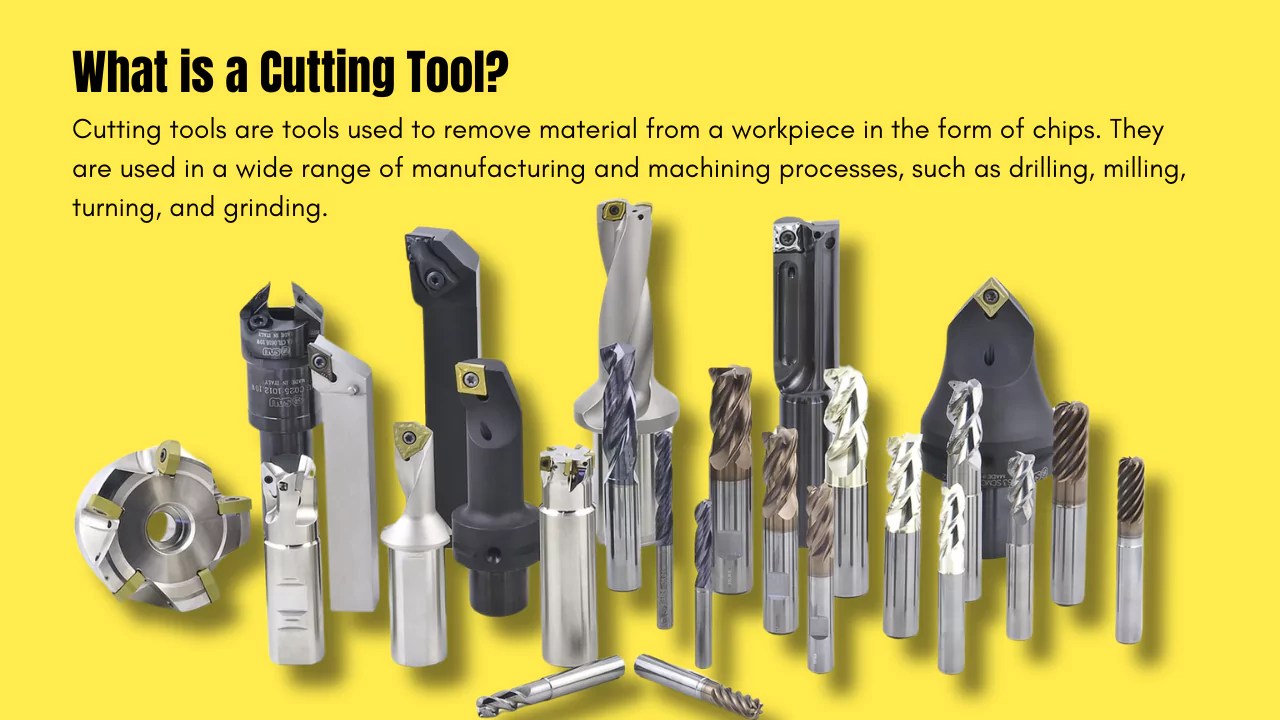I’ve been in the steel business for over 25 years, and if there’s one thing I’ve learned, it’s that spec sheets don’t tell the whole story. I’ve seen engineers choose the “strongest” material on paper only to have it fail spectacularly in the real world. Why? Because when it comes to high-performance materials, especially high carbon steel, the numbers are only half the equation. The other half is experience.
I remember a client years ago who was manufacturing industrial cutting blades. They were frustrated because their blades, made from a generic high carbon steel, were chipping and failing prematurely. They showed me the specs, and on paper, everything looked right. But they were missing the nuance—the subtle differences in grade selection and, most importantly, the critical role of a precise heat treatment. We switched them to a D2 tool steel with a carefully controlled quench and temper cycle, and their tool life tripled. That’s the kind of real-world difference that gets me excited about this material.
This guide isn’t a rehash of textbook definitions. It’s a collection of hard-won lessons from the shop floor. We’re going to cut through the jargon and talk about what really matters when you’re choosing and using high carbon steel. At Huaxiao-Alloy, we’re not just suppliers; we’re problem-solvers who have spent decades mastering these materials. Let’s dive in.

What Really Makes High Carbon Steel Tick?
When you get down to it, the magic of high carbon steel comes from a carbon content of 0.60% or higher. But to say it’s “just more carbon” is a massive oversimplification. It’s like saying a diamond is just a piece of coal. The carbon fundamentally changes the steel’s personality.
It’s All About the Carbon (But It’s Not That Simple)
Think of it this way: in standard steel, the iron atoms are arranged in a relatively neat, orderly crystal structure. They can slide past each other, which makes the material ductile and easy to form. When you introduce a higher amount of carbon, those carbon atoms wedge themselves into the iron lattice. This makes it much more difficult for the iron atoms to move, which dramatically increases the steel’s hardness and strength. It’s this atomic-level traffic jam that gives high carbon steel its incredible ability to resist wear and hold a sharp edge.
But, as with everything in engineering, there’s a trade-off. This newfound hardness comes at the cost of ductility. The material becomes more brittle, like glass. It can withstand immense pressure and abrasion, but it’s more susceptible to fracturing under a sudden, sharp impact. Mastering high carbon steel is all about managing this trade-off.
A Quick, No-Nonsense Comparison
I’ve seen people use the wrong type of carbon steel more times than I can count. Here’s my practical take on when to use which, and more importantly, when not to.
| Steel Type | My Takeaway | When to Use It | When to Avoid It |
| Low Carbon Steel | The workhorse. It’s cheap, forgiving, and easy to weld. | Structural parts, car bodies, anything that needs to be formed easily. | Anything requiring high strength, hardness, or wear resistance. |
| Medium Carbon Steel | The balanced all-rounder. Stronger than mild steel, tougher than high carbon. | Shafts, gears, axles—parts that need a good balance of strength and toughness. | Applications needing extreme hardness or the formability of mild steel. |
| High Carbon Steel | The specialist. It’s the undisputed king of hardness and wear resistance. | Cutting tools, springs, high-wear dies, any application where holding an edge is critical. | Structural parts that might see sudden impacts, or parts that need to be welded extensively. |
A few years back, a new engineer specified a high carbon steel for a machine guard on a piece of heavy equipment. His logic was sound on the surface: “It’s a high-impact area, so I need the strongest steel.” The first time a piece of debris hit that guard, it didn’t dent; it shattered, sending sharp fragments across the shop. We replaced it with a medium carbon steel guard that could absorb the impact. It was a classic case of choosing hardness when what was really needed was toughness.
The Properties That Actually Matter in Your Application
Forget the long lists of mechanical properties you see in textbooks. In my experience, there are a few key characteristics that truly define how high carbon steel will perform in the real world. Understanding these is crucial to getting your material selection right.
Beyond the Spec Sheet: Hardness vs. Toughness
This is the single most important concept to grasp when working with high carbon steel. I’ve seen it trip up even experienced engineers. Hardness is the ability of the steel to resist abrasion, indentation, and wear. It’s what allows a knife to stay sharp or a die to punch out thousands of parts without losing its shape. High carbon steel, when properly heat-treated, is exceptionally hard.
Toughness, on the other hand, is the ability to absorb energy and deform without fracturing. Think of it as the material’s resistance to being shattered. A ceramic plate is very hard, but it has almost zero toughness. A rubber mallet is very tough, but has low hardness.
The challenge and the art of working with high carbon steel lie in finding the perfect balance between these two properties for your specific application. A blade needs to be hard enough to hold an edge, but tough enough not to chip or break if it hits a hard object. This balance is achieved almost entirely through heat treatment, which we’ll discuss later.
Wear Resistance: The Real Money-Maker
For many of my clients at Huaxiao-Alloy, wear resistance is the most critical property. When a production line has to stop because a cutting tool or a forming die has worn out, it costs real money. The high carbide content in high carbon steels, especially in grades like D2, creates incredibly hard particles within the steel’s microstructure. These act like microscopic armor, protecting the material from abrasive wear. This is why high carbon steel is the go-to choice for any application that involves cutting, shaping, or forming other materials.
The Challenge of Machinability
Let’s be honest: high carbon steel can be a real pain to machine. In its annealed (softest) state, it’s manageable, but it’s still tougher on tooling than mild steels. In its hardened state, it’s nearly impossible to machine with conventional methods and often requires grinding. This is a critical factor to consider in your design and manufacturing process. If you design a complex part that requires a lot of machining after heat treatment, your costs will skyrocket. This is where partnering with a knowledgeable supplier is key. We often help our clients refine their manufacturing sequence to ensure that the bulk of the machining is done while the steel is still in its soft, workable state.
Navigating the World of High Carbon Steel Grades
Walking into the world of high carbon steel grades can feel like walking into a restaurant with a 20-page menu. There are dozens of options, and they all seem similar at first glance. Over the years, I’ve learned to think of them not as a list, but as a toolbox. Each grade is a specific tool designed for a specific job. Let me introduce you to a few of my most trusted tools.
The Workhorses: Common Tool Steel Grades
These are the grades I see and use most often. They cover a wide range of applications and are the foundation of any good toolmaker’s inventory.
•O1 (Oil-Hardening): I call this one “Old Reliable.” It’s one of the most forgiving tool steels to heat treat, and it achieves excellent hardness with good toughness. It’s my go-to recommendation for general-purpose tooling, jigs, and fixtures where you need a significant step up from plain carbon steel without breaking the bank. It’s a joy to work with and a great starting point for many applications.
•A2 (Air-Hardening): This is the modern upgrade to O1. The “A” stands for air-hardening, which is its biggest advantage. Because it’s cooled in still air during quenching, it experiences much less distortion and is far less likely to crack than an oil-quenched steel. This makes it perfect for more complex parts, dies, and punches where dimensional stability is critical. It also offers better wear resistance than O1.
•D2 (High-Carbon, High-Chrome): When a client comes to me and says, “I need the absolute best wear resistance, period,” I point them to D2. With its high carbon and very high chromium content, this grade is a beast. It’s so wear-resistant that it’s often used for long-run stamping dies and industrial shredder blades. However, this performance comes with a price. D2 is tough to machine and can be challenging to sharpen correctly. It’s a specialist’s tool, but when you need it, nothing else will do.
Don’t Forget Spring Steels!
It’s a common mistake to lump all high carbon steels in with tool steels. Spring steels are a unique family, designed for a completely different purpose. Grades like 1075 and 1095 are engineered not just to be hard, but to have a very high yield strength. This allows them to bend and flex under a load and then return to their original shape without permanent deformation. This “memory” is what makes them perfect for everything from automotive coil springs to the tiny clips and flat springs inside electronic devices.
Finding the Right Grade for Your Job (That’s Where We Come In)
Choosing the right grade is a critical decision that impacts performance, manufacturing cost, and tool life. At Huaxiao-Alloy, we see ourselves as consultants first and suppliers second. We stock a comprehensive range of all these grades and more. But our real value comes from our team’s expertise. We’ll listen to your application requirements, discuss your manufacturing processes, and help you select the one grade that will deliver the best performance and value for your specific project.
The Art and Science of Heat Treatment
If there is one single process that defines the success or failure of a high carbon steel component, it’s heat treatment. You can choose the perfect grade of steel, machine it to flawless dimensions, but if the heat treatment is botched, you have an expensive piece of scrap metal. I’ve seen it happen. This is the step where you transform the steel from a workable material into a high-performance tool. It’s part science, part metallurgy, and a healthy dose of art born from experience.
Quenching & Tempering: A Two-Step Dance
I like to explain this process to my clients as a critical two-step dance. If you miss a step or get the timing wrong, the whole performance is ruined.
1.The Quench (The Hardening): First, you heat the steel to a precise temperature (typically around 800-900°C), where its internal crystal structure changes into a state called austenite, which can dissolve a lot of carbon. Then, you cool it down very rapidly by plunging it into a medium like oil, water, or even just air for air-hardening steels. This rapid cooling, or “quench,” traps the carbon atoms, creating a new, extremely hard and brittle structure called martensite. This is where the steel gets its hardness. The key is cooling it fast enough to miss the formation of softer structures, like pearlite.
2.The Temper (The Toughening): A freshly quenched part is often too brittle for any practical use. It has all the hardness you could want, but it’s full of internal stresses and has no toughness. The second step, tempering, is a controlled reheating process at a much lower temperature (usually 150-650°C). This process relieves the internal stresses and allows the microstructure to relax slightly, trading a small amount of hardness for a significant gain in toughness. The tempering temperature is where the art comes in. A low temper gives you extreme hardness for a cutting edge, while a high temper gives you the toughness needed for an impact tool.
Surface Finishing: The Final Armor
High carbon steels, with the exception of high-chromium grades like D2, have one major weakness: they rust. For many applications, especially those in humid or corrosive environments, a final surface treatment is essential. This isn’t just for looks; it’s a protective armor.
•Black Oxide: This is a common and cost-effective conversion coating that provides mild corrosion resistance and a desirable black finish. It’s great for tooling and components where you don’t want a thick coating that would alter dimensions.
•Phosphating: This process creates a thin, crystalline phosphate layer on the surface. It’s an excellent primer for paint and provides good corrosion resistance on its own.
•Specialized Coatings (PVD/CVD): For the most demanding applications, we can apply advanced coatings like Titanium Nitride (TiN) or Diamond-Like Carbon (DLC). These are incredibly hard, low-friction coatings that can dramatically increase the wear resistance and lifespan of cutting tools and dies.
Our Commitment to a Perfect Finish
At Huaxiao-Alloy, we’ve invested heavily in our finishing capabilities because we know that our customers need more than just raw material. They need finished components that are ready to perform. We can manage the entire process, from material selection through heat treatment and final surface coating, ensuring that every step is done to the highest standard. This integrated approach guarantees quality and saves our customers the headache of managing multiple vendors.
Where High Carbon Steel Shines: Real-World Examples
Theory is one thing, but seeing where these materials perform in the real world is what truly matters. Here are a few areas where high carbon steel isn’t just an option—it’s the only choice.
•Cutting Tools: This is the most classic application. From the chef’s knife in your kitchen to the complex milling cutters used in aerospace manufacturing, the ability to achieve and hold a razor-sharp edge is paramount. The high hardness of heat-treated high carbon steel allows it to sever other materials cleanly. I’ve worked with companies making everything from surgical scalpels to industrial paper-cutting blades, and the common thread is always a high carbon or tool steel.
•Springs and High-Strength Wire: This is where the unique property of high yield strength comes into play. Think about a car’s suspension spring. It compresses and rebounds millions of times in its life, all while supporting the weight of the vehicle. Only a high carbon spring steel has the “memory” to do this without sagging or breaking. The same principle applies to piano wire, guitar strings, and the tiny springs inside locks and watches.
•High-Wear Components (Dies, Punches, Molds): In the world of manufacturing, tooling is a major expense. When you’re stamping out thousands of metal parts, you need a die that won’t wear out or deform. This is where grades like D2 excel. Their incredible wear resistance means longer production runs, less downtime, and a lower cost per part. I’ve seen D2 dies that have produced over a million parts and are still going strong.
Why Partner with Huaxiao-Alloy? It’s About More Than Just Steel.
Over my 25 years in this business, I’ve seen what separates the great suppliers from the average ones. It’s not about having the biggest inventory or the lowest price. It’s about being a true partner. It’s about having the expertise to help your clients solve their toughest challenges.
•Experience: We’ve seen firsthand what works and what doesn’t across hundreds of industries. We bring that collective knowledge to every project, helping you avoid common pitfalls and find the optimal solution.
•Problem-Solving: We’re not just order-takers. When a client comes to us with a problem—a tool that’s failing, a component that’s wearing out too quickly—we roll up our sleeves and become part of their engineering team. We analyze the failure, question the assumptions, and find a better way.
•Quality Control: We are obsessive about quality. We know that our clients are trusting us with their most critical components. From verifying the chemical composition of our raw materials to meticulously controlling our heat treatment and finishing processes, we stand behind every part that leaves our facility.
•One-Stop Solution: We’ve built our business to be a complete solution. We can take your project from the initial concept and material selection all the way through to a fully finished, coated, and ready-to-use component. This simplifies your supply chain and ensures that the quality is consistent from start to finish.
Got a tough material challenge? Let’s talk. Our experts are ready to help you find the right solution.
Your Questions, Answered by an Expert
Q: What’s the hardest type of steel? A: While there are some exotic alloys out there, for most practical purposes, a properly heat-treated high carbon tool steel like D2 or a tungsten carbide steel will be among the hardest and most wear-resistant steels available.
Q: Can you weld high carbon steel? A: It’s challenging and requires special procedures. Because of the high carbon content, the area around the weld becomes very brittle. It requires pre-heating, post-heating (to temper the weld area), and specialized welding rods. It’s not recommended for structural applications.
Q: Why do my high carbon steel tools rust so easily? A: Rust (iron oxide) is the natural state of iron. The high carbon content doesn’t prevent rust. In fact, the only thing that does is a significant amount of chromium (over 12%), which is what makes stainless steel “stainless.” High carbon steel tools require a light coating of oil or a protective surface treatment to prevent corrosion.
Q: How do I know if I need A2 or D2 tool steel? A: My rule of thumb is this: Start with A2. It has great toughness and good wear resistance, and it’s more forgiving to work with. Only move up to D2 if your primary problem is abrasive wear and you need the absolute longest tool life, and you’re prepared for the challenges in machining and sharpening it.
Q: What’s the difference between high carbon steel and spring steel? A: All spring steels are high carbon steels, but not all high carbon steels are spring steels. Spring steels are specifically processed to have a very high yield strength, which gives them their “springiness.” Other high carbon steels, like tool steels, are processed for maximum hardness and wear resistance.
Q: Does Huaxiao-Alloy provide heat treatment services? A: Yes, absolutely. We consider it a core part of our expertise. We provide a full range of heat treatment and surface finishing services, all controlled to the highest standards to ensure your components have the exact properties you need.
A Final Word of Advice
High carbon steel is a phenomenal material. It’s the foundation of modern manufacturing, enabling us to cut, shape, and form the world around us. But it’s a material that demands respect. It’s not a one-size-fits-all solution. Its incredible performance is only unlocked through a deep understanding of the right grade, the right application, and, above all, the right heat treatment.
Choosing the right material is half the battle. Choosing the right partner to supply and process that material is the other half. At Huaxiao-Alloy, we’re committed to being that partner. We invite you to bring us your challenges and let our experience work for you.



